Tokyo Cycle Parts Show
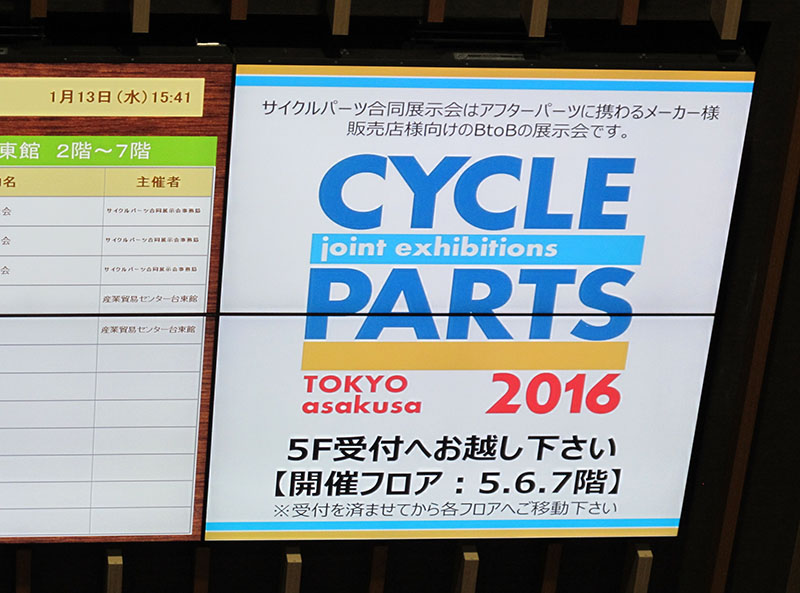
The first Tokyo Cycle Parts show was held last week. This trade show is open only to the bicycle industry, which allowed focused inquiry into products, and provided a good glimpse at what is happening in Japanese cycling.
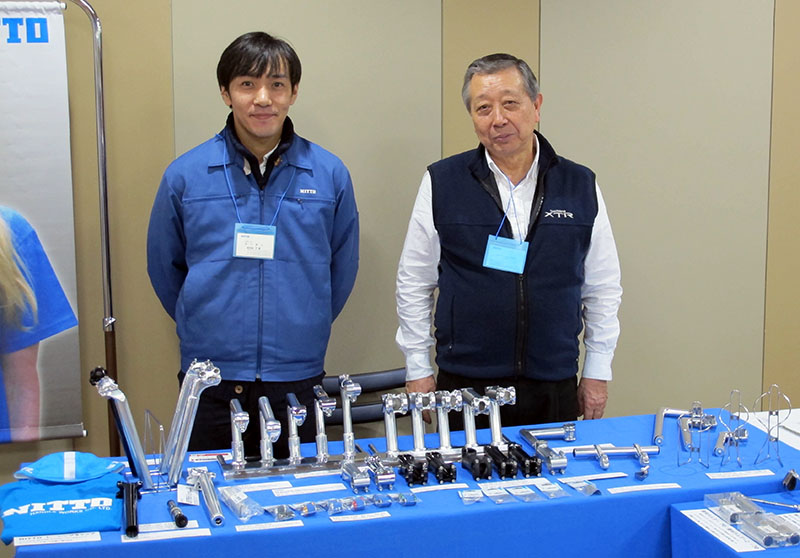
For me, it also provided a great opportunity to see acquaintances, such as Mr. Yoshikawa, the president of Nitto, and his son.

Mr. Imi, the owner of Ostrich, was there, too. We discussed a few new product ideas, even though I usually visit the companies directly to discuss new projects with fewer distractions.
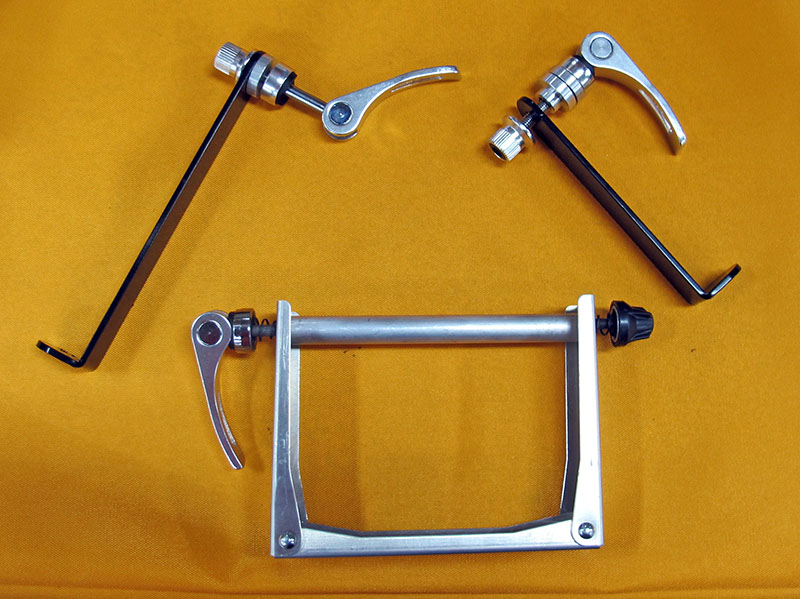
Among the interesting new products were Ostrich’s bike stands. They raise the rear derailleur off the ground when the bike is disassembled for Rinko. The larger collapsible stand (bottom) has been available for a while, but the minimalist single-sided ones (in two lengths) are new. You can see a bike with the single-sided stand on the table in the photo of the Ostrich booth.
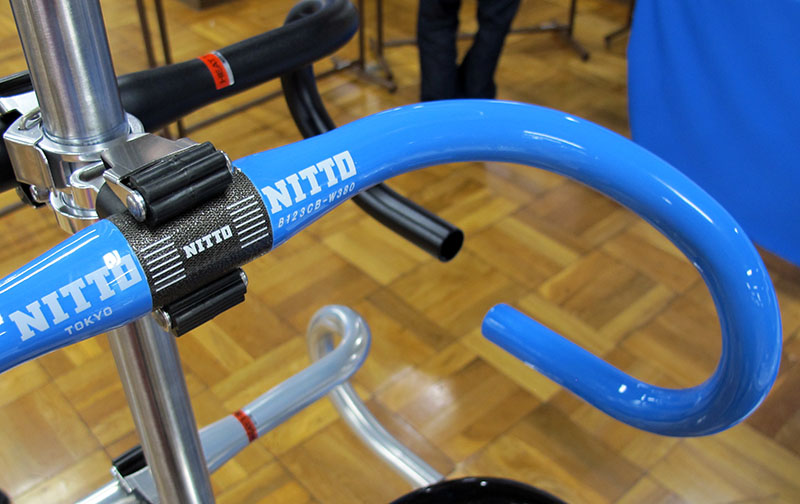
Speaking of new products, Nitto showed their first carbon handlebars. Made in Japan, they are made to Nitto’s exacting quality standards. The track version (above) is painted Nitto blue. Sharp eyes will notice the width: just 380 mm. Japanese track racers prefer narrow bars, so they can exploit small gaps when they make their winning moves.
As impressive as these bars are, I don’t think a carbon fiber version of the Compass Randonneur handlebars is in our future plans.
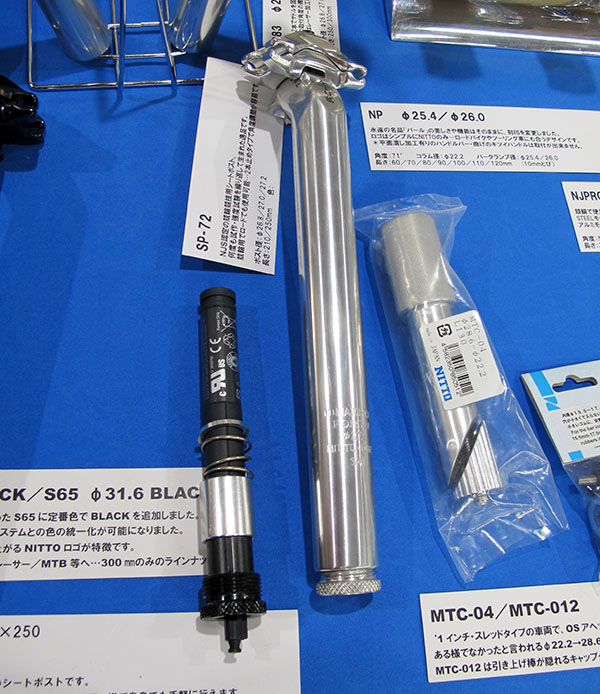
Another product is unlikely to make it into the Compass program: Nitto is making a seatpost-mounted Di2 battery system for Shimano.
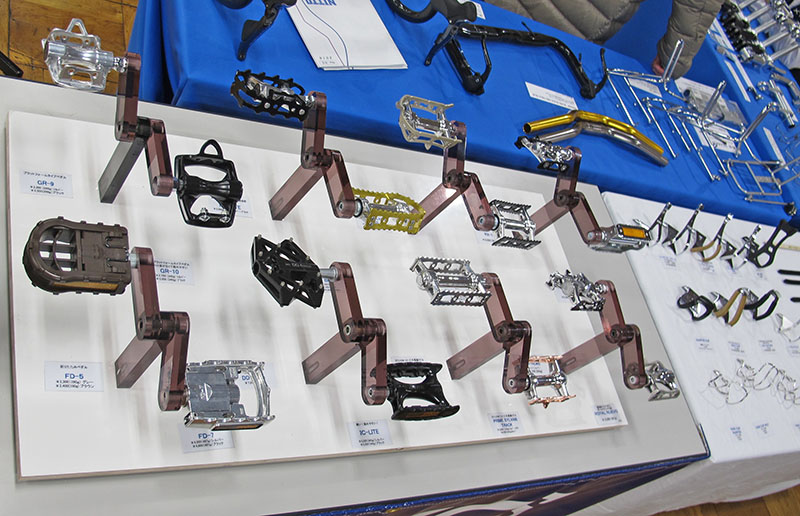
MKS showed their pedals, including the beautiful top-of-the-line ones that Compass sells.
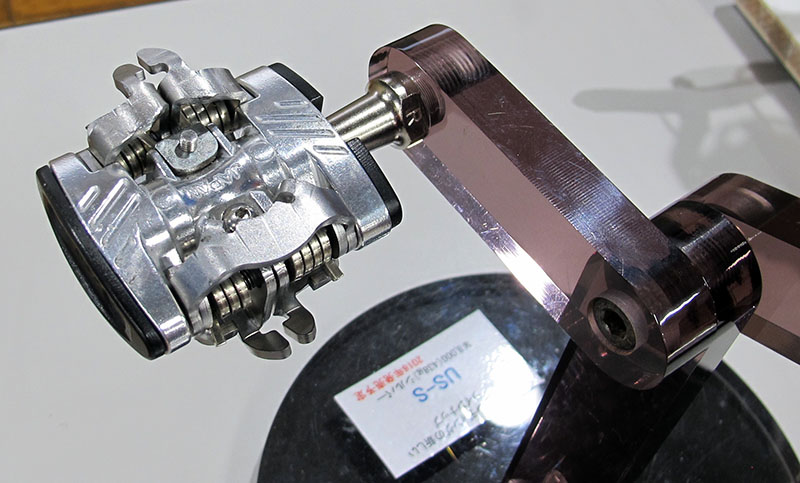
I finally got to see their new SPD pedal. More than a year ago, I’d seen drawings, then photos of prototypes. I am not so keen on the aesthetics, but the function is neat. The front retention mechanism is split, so you need to open only one side to release your foot, yet the shoe is held securely when you pedal. A Rinko version also will be available. And of course, the bearings are better than any other SPD pedal…
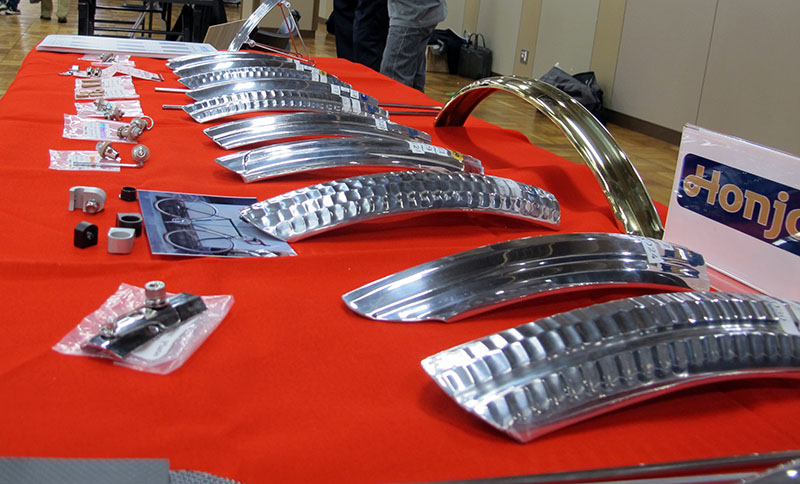
Honjo had only a small table to show their lovely fenders. I think that is because they are plenty busy these days.
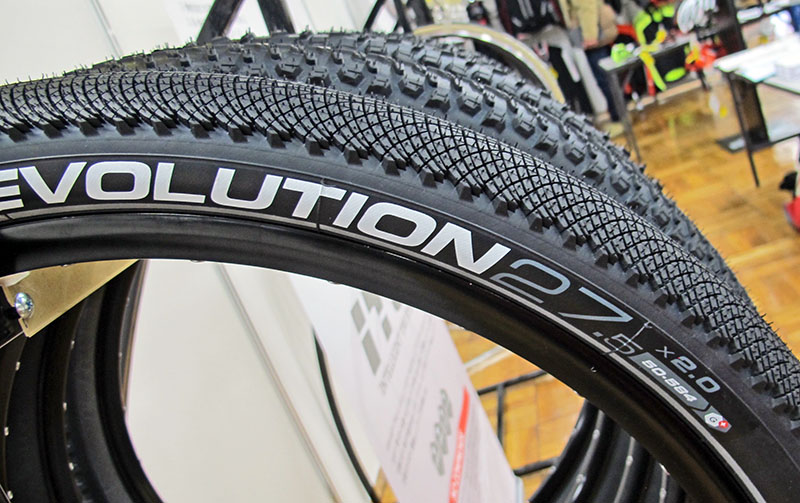
From fenders to tires: Even in the mainstream, 650B no longer is purely for mountain bikes, and more companies offer road-oriented tread patterns. Vittoria’s new “Revolution” is 50 mm wide and looked promising at first. But the weight of 810 grams shows that there is a lot of rubber, and the description lists it as an “urban” tire. When will Vittoria finally offer their high-end racing tires in more sensible widths?
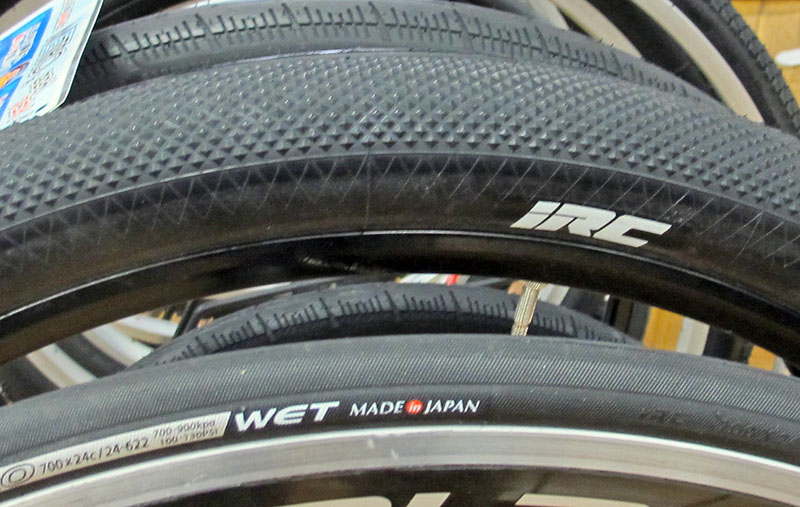
IRC’s new 650B x 54 mm tire felt more promising when I pressed it between my fingers. No specs were available. We’ll try to get a test sample soon. Perhaps it’s a sign that the Enduro Allroad Bike idea is catching on.
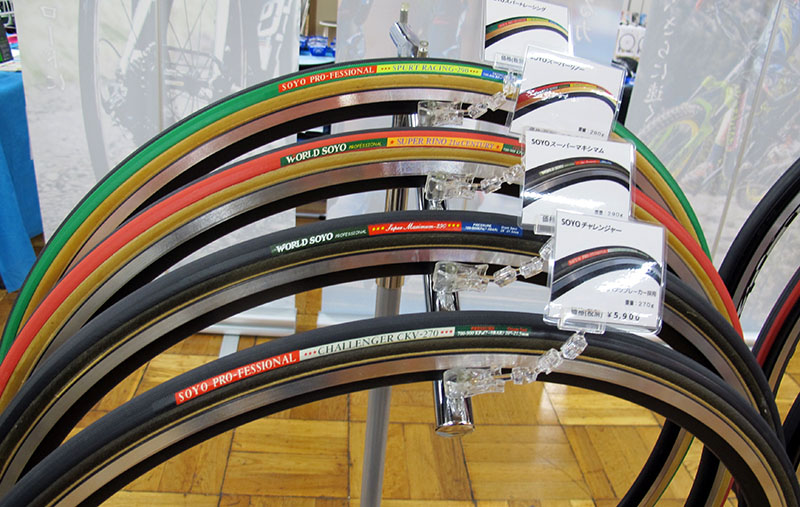
Soyo offers hand-made tubular tires that look very nice, but they are available only in narrow widths. And they carry a price tag of more than $ 200 for the best ones. Still, it’s nice to see that true handmade tires are still produced in Japan.
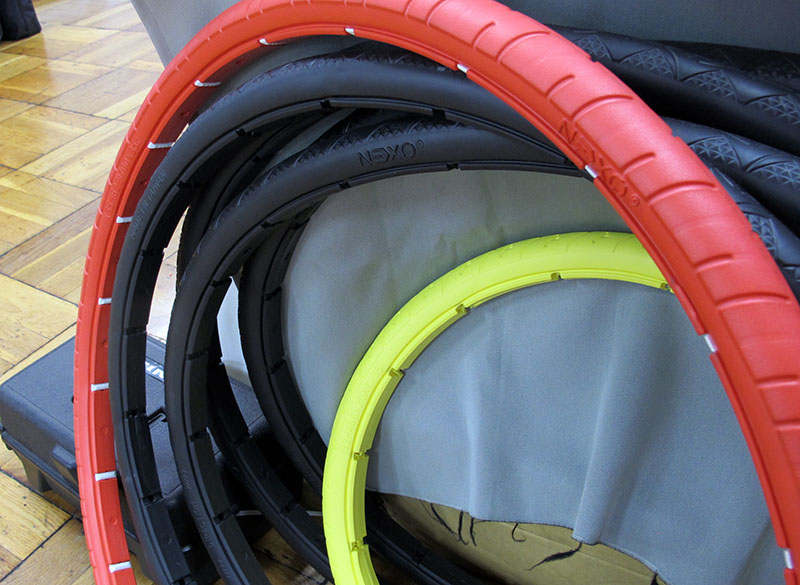
At the other end of the spectrum, airless tires are alive and well. And they are as scary as ever!
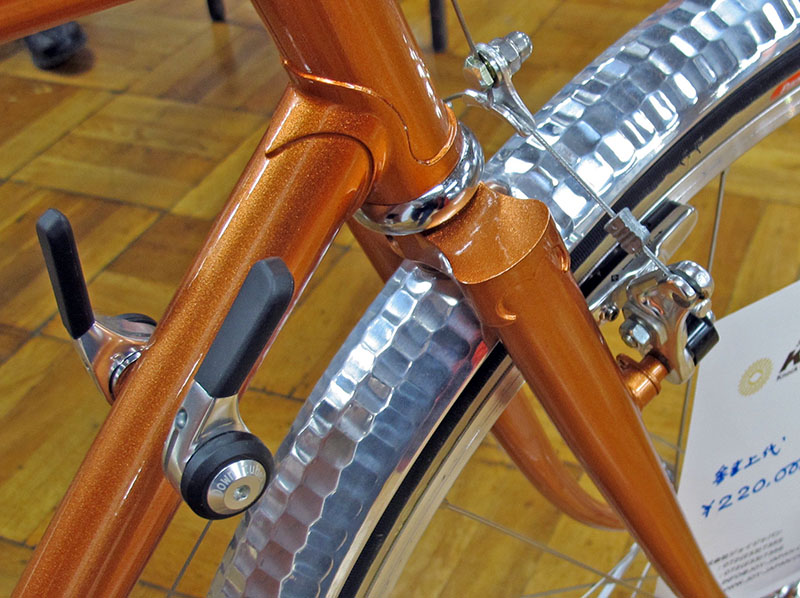
More encouraging: In Japan, you still can buy lugged production bikes with downtube shift levers and hammered fenders for less than $ 2000.
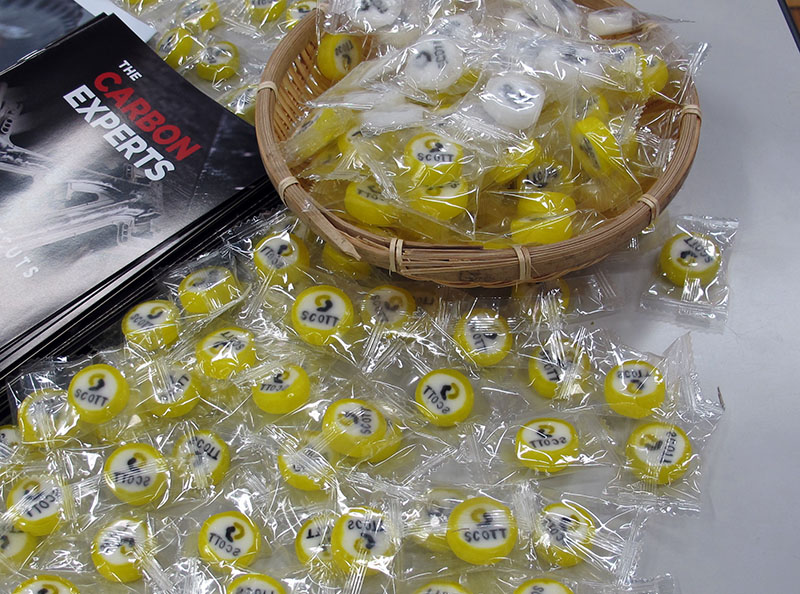
Of course, carbon is big in the mainstream, and Scott had their own candy made to celebrate their claim that they are “carbon experts”.

Contrasting with the carbon were the leather goods from a Japanese company. Their extra-thin handlebar tape looked interesting.
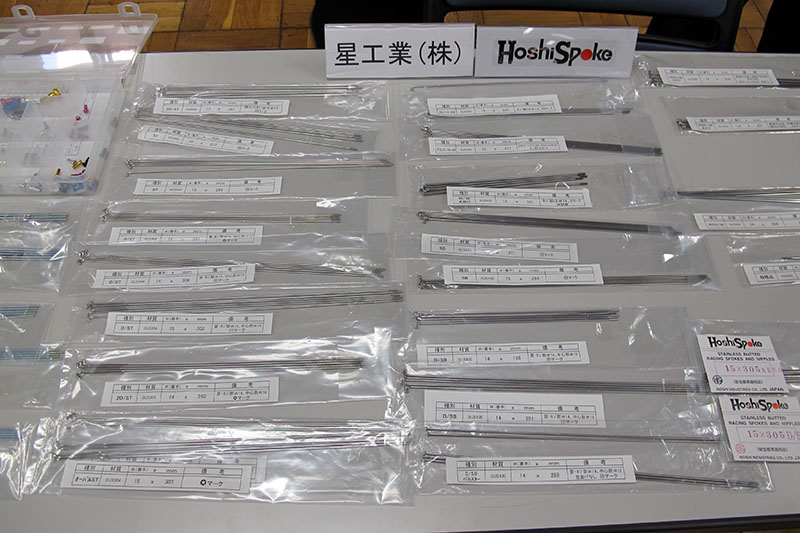
When I started cycling seriously, Hoshi spokes were considered the best. Nice to see that they are still around, offering a wide variety of spokes, including the bladed ones that they pioneered long before they became fashionable.
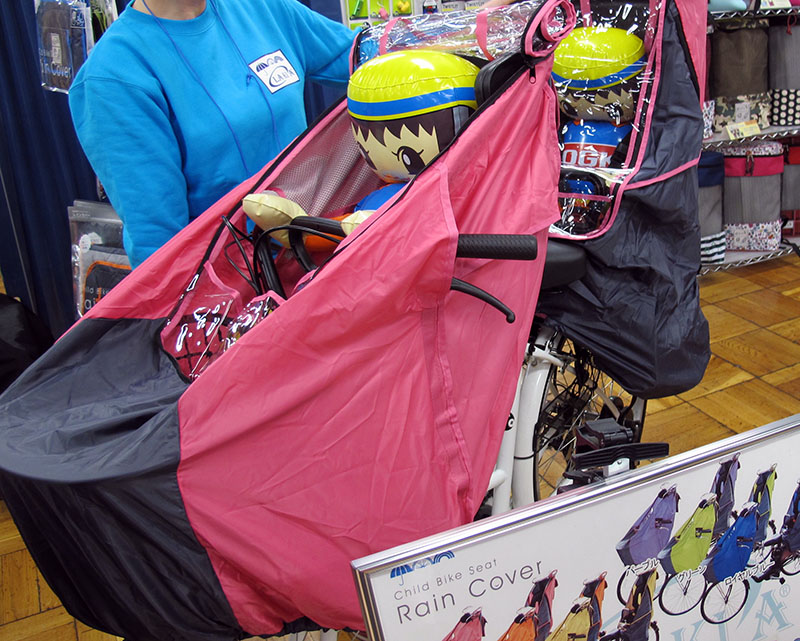
Another Japanese specialty are rain covers for child seats. It’s common to carry two children on your bike in any weather. This maker used cute inflatable figures to demonstrate their covers.
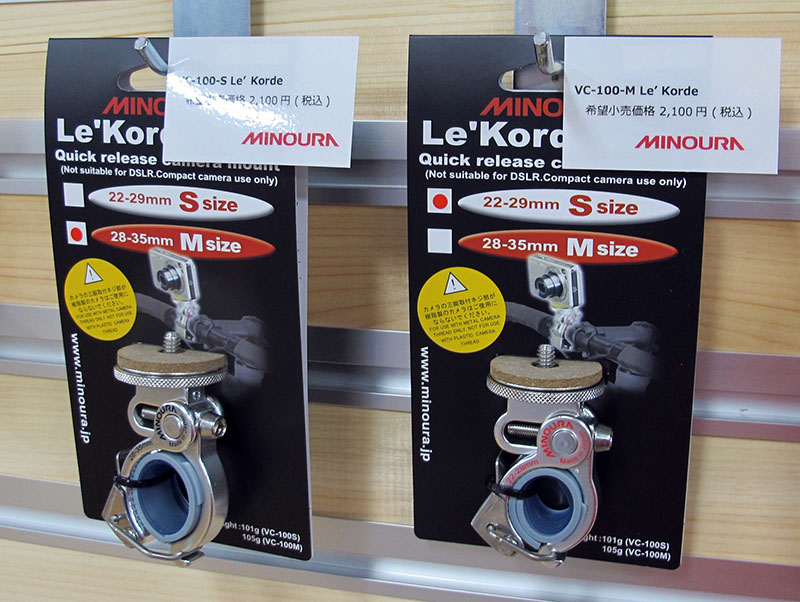
Among the many things at the Minoura stand was this neat camera mount, which uses your bike to stabilize your camera. Lionel Brans had a similar mount on his custom bike when he rode from Paris to Saigon in 1947. As long as you don’t need your bike in the photo, it’s a neat idea.

And then you have true oddballs, like these stickers to dress up your bike. Do you prefer your fenders with a houndstooth or a plaid pattern?
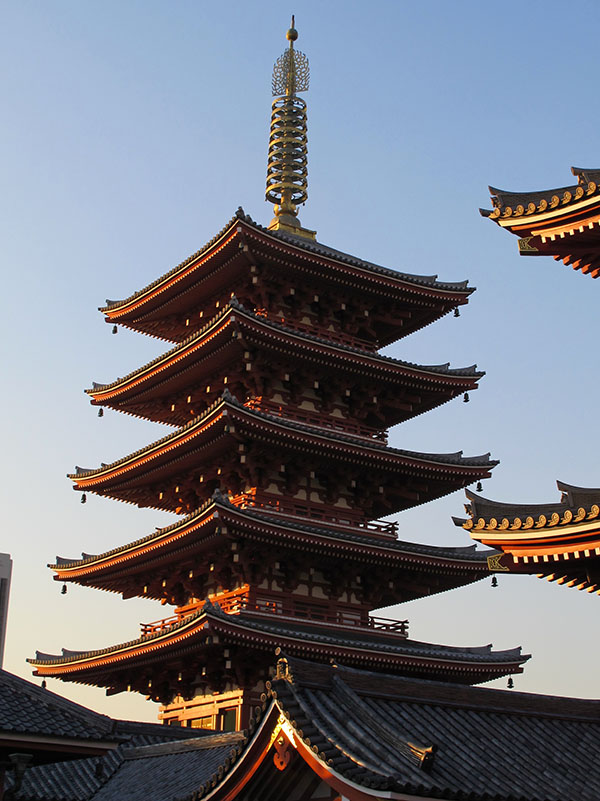
The sun was setting when I finally left the exhibit. As I walked by the pagoda of the temple in Asakusa, I was reminded how Japan has a long tradition of making beautiful things. The best Japanese bicycle makers are rooted in that tradition, and that is why we enjoy working with them so much.


